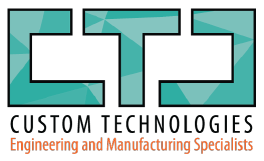Introduction
Printed Circuit Boards (PCBs) are the backbone of modern electronic devices, and their manufacturing process is a marvel of engineering precision. From initial design to final production, each step is crucial in shaping the functionality and reliability of these essential components.
The Crucial Stages of PCB Design
The journey begins with meticulous PCB design, typically using CAD software. Here, every aspect of the circuit, from electronic components to copper trace layouts, is carefully planned and laid out. The final design is then exported in a standardized format, ready for manufacturing.
Imaging and UV Light Processing
The next stage is imaging the design onto the PCB substrate. This involves transferring the schematic onto the board using a plotter printer, creating a film that delineates copper pathways. The board is then subjected to UV light, which hardens the photoresist and defines the areas for copper etching.
Precision Drilling and Plating in PCB Manufacturing
After the layers of a PCB are aligned and inspected, the next critical phase is drilling and plating. This stage is where the physical and electrical connections between the board layers are established.
Drilling Process: Precision and Complexity
- The drilling process begins with an X-ray locator identifying exact drill target spots.
- Computer-controlled drills with air-driven spindles, rotating at 150,000 rpm, create precise holes. These holes are essential for later stages, housing the vias and mechanical mounting points.
- The accuracy of this process is crucial as it determines the reliability of the PCB’s electrical connections.
Plating: Establishing Electrical Connectivity
- After drilling, the PCB undergoes plating. This step fuses the different layers together using chemical deposition.
- A thin copper layer is deposited over the surface of the panel, including the walls of the drilled holes, to establish electrical connectivity.
- This copper plating is essential for the functionality of the PCB, as it forms the conductive pathways between different layers.
The drilling and plating stages are integral to ensuring the functionality and reliability of the final PCB product. Each step must be executed with precision to ensure that the PCB meets the required electrical and physical standards.
Shall I proceed with the next section, covering the final assembly and quality control in PCB manufacturing?
Final Assembly and Quality Control in PCB Manufacturing
The culmination of the PCB manufacturing process is the final assembly and rigorous quality control, where every detail matters.
Component Integration: Precision in Every Connection
- Surface Mounting: Components are placed onto the surface of the PCB. This technique allows for more components on a smaller area, facilitating the miniaturization of electronic devices.
- Through-Hole Technology: This traditional method involves inserting component leads into holes drilled in the PCB and soldering them on the other side. It’s known for providing strong mechanical bonds.
Meticulous Quality Control: Ensuring Reliability
- After assembly, each PCB undergoes a thorough quality control process. This includes visual inspections, often aided by microscopes, to check soldering quality and component placement.
- Electrical Testing: PCBs are tested for functionality, ensuring they meet the design specifications and operate as intended. This might involve in-circuit testing or functional testing.
This final phase is critical to the success of the PCB. It’s where precision craftsmanship meets stringent quality standards, ensuring that the final product performs reliably in the field.
Conclusion: The Art and Science of PCB Manufacturing
The journey of PCB manufacturing, from a conceptual design to a fully functional circuit board, is a remarkable blend of art and science. It exemplifies precision, innovation, and technological advancement at every step.
- From Design to Reality: The process starts with a detailed design, where every trace and component placement is carefully plotted. This phase sets the foundation for the entire manufacturing process.
- Precision Engineering: Each subsequent step, from imaging and drilling to layer alignment and lamination, demands meticulous precision and expertise.
- Quality at the Core: Throughout the manufacturing process, quality control remains a paramount concern. It ensures that the final product not only meets the design specifications but also stands up to the rigorous demands of real-world application.
In the end, the PCB emerges not just as a piece of technology, but as a testament to human ingenuity and the relentless pursuit of perfection in electronics manufacturing. It’s a process where advanced technology, engineering precision, and quality control converge to create the heart of modern electronics.


